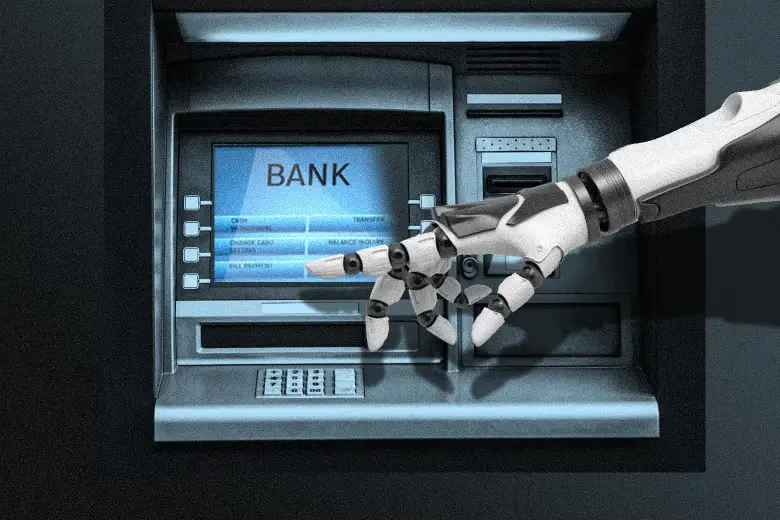In simple words, fintech is a general term for all IT products, software, and services banks and financial organizations use in daily business operations. Mobile payments apps, Regtech, FaaS, BaaS, blockchain, and cryptocurrencies are fine examples of Fintech trends used by banks, financial organizations, and ordinary individuals.
In India, many tech-savvy individuals use digital payment gateways to pay for goods and services at hotels, schools, grocery shops, restaurants, etc. Thanks a lot to the availability of inexpensive Internet in our country, 63.97% of people use net banking regularly.
Moreover, 150 Million actively use different UPI payments to pay for purchased goods and services. Their numbers are likely to grow to 500 million by 2025. It would not be wrong to say that the banking sector made a qualitative breakthrough in technology adoption in 2019 when the coronavirus pandemic spread in different parts of the world. First, they had no option but to switch to a remote work format in the shortest possible time to interact with customers effectively.
In 2020 and 2021-
- 20% of new customers installed a mobile banking application for the first time,
- Mobile banking services increased by about 30%,
- 50% of new customers used net banking to send and receive money,
- Even pensioners, who previously loved to solve banking issues in offline mode, learned mobile internet banking,
- Covid-19 contributed to the growth of financial literacy of Indians,
2021 was a great year for fintech as funding in this sector amazingly grew by 69%. What can we expect in 2022 when it comes to Fintech trends? Let’s see.
Also Read: How Online Personal Loans are Changing the Whole Financial Industry
Mobile Banking Will Increase Further

Mobile Internet banking is one of the most useful technological solutions in the last 20 years. It allows people to manage their bank accounts on Internet-enabled mobile devices remotely. All major and small banks in India have mobile apps listed on the Google Play store. You can download the mobile app of your favorite bank and start conducting a wide range of banking activities from any location and at any time. Bank’s apps are quite initiative and fast. It helps ensure the safe transaction of funds from one bank to another and avoids the risk of carrying too much cash. Moreover, the availability of different UPI payment gateways has made digital transactions an easy affair for many ordinary Indians.
| UPI Payment Apps In India | Total Numbers of Users (Approx) |
| Google Pay | More Than 70 Million |
| PhonePe | More than 350 Million |
| Paytm | More than 130 Million |
| MobiKwik | 101 Million |
| Yono By SBI | 37 Million |
| ICICI Pockets | 2 Million |
| HDFC PayZaap | More than 14 Million |
| Amazon Pay | 50 Million |
In 2022, more people will start using mobile banking.
The Increased Use of Artificial Intelligence & Machine Learning In Banks

Most people won’t believe it. Still, until a few years ago, stories about the introduction of artificial intelligence and machine learning in the banking sector seemed funny. But now, banks are using these technologies more than ordinary individuals can imagine. They use AI and machine learning to reduce manual labor, quickly calculate insurance premiums, access the creditworthiness of clients, etc. Earlier, banks used AI-based chatbots and virtual assistants to answer the answers to the most straightforward questions of customers. Fintech trends Now, they use AI technologies on a large scale to-
- Automate the process of the front and back office,
- Automate the work of customer relations departments,
- Track suspicious transactions,
- Make a decision about giving or refusing a loan to a customer, etc.
According to McKinsey, AI & machine learning help companies reduce everyday expenses by leaps and bounds & earn $1 trillion annually.
Artificial intelligence allows banks to create more accurate and unbiased scoring models. With its help, they can evaluate the trustworthiness of borrowers based on their personal credit history. AI and machine learning algorithms can check clients and make predictions about their future behavior based on the data about other credit borrowers with similar characteristics.
The bank’s service engineers have long been using artificial intelligence to maintain ATMs and distribute the tasks of timely maintenance of equipment. It is also a part of biometric identity recognition systems. In 2022, this fintech trends is likely to continue and intensify.
The Rapidly Increasing Use of Cloud Technologies in the Banking Sector

As per a Harvard Business Review survey, nearly 30% of all banks around the globe use cloud technologies to reach out to a large number of customers and increase their clout in the banking sector. How will cloud technologies help the banking sector in 2022?
To Ensure Information Security And Business Continuity
Large banks heavily rely on the IT department of other companies for their digital incarnation and services. It leads to increased IT costs and the emergence of a clumsy system not ready to respond quickly to market demands. That is why they have started to use cloud-based solutions to ensure data protection and solve business problems in a trusted environment. They can conduct penetration tests several times a year to learn how to fend off cyberattacks and stimulate peak workloads.
Easy Storage of A large Amount of Data
Banks uses biometrics to ensure information security. This includes a comprehensive analysis of fingerprints, the pattern of blood vessels in the palm, retina image, facial expressions, mouse movement, etc. According to a study by the IT network Spiceworks, 86 of all banks in Europe and Noth America used biometric authentication in 2020. Indian banks have also started using biometrics technologies to collect data and remotely identify customers. They hold a large amount of data, likely to grow in 2022. It will reduce the bank’s IT infrastructure pressure without compromising the speed and availability of services. Experts predict more Indian banks will use cloud services in 2022 to secure analytical systems that use personal data to develop personalized banking offers.
Also Read: What Are Short-Term Personal Loans, and How Can You Take Care of Them
Saving A Lot of Money On IT Infrastructure
Numerous Indian banks use cloud-based IT solutions to minimize capital expenditures. By moving from their infrastructure, banks get more flexibility and stop depending on the heavy IT ecosystem that needs to be maintained, updated, and amortized from time to time. Cloud services reduce the need for buying software and hardware. Although different Indian banks have limited could service only for testing pilot projects and reserving data. Nevertheless, cloud services will help banks achieve the fastest possible implementation of the latest banking technologies for customers. It will also enable them to develop fintech trends ecosystems beyond classical banking.
Investment in Cryptocurrencies Will Grow

| Worldwide Ranking (In cryptocurrency use) | Country |
| 1. | Vietnam |
| 2. | India |
| 3. | Pakistan |
| 4. | Ukraina |
| 5. | Kenya |
| 6. | Nigeria |
| 7. | Venezuela |
| 8. | USA |
| 9. | Togo |
| 10. | Argentina |
| 11. | Colombia |
| 12. | Thailand |
| 13. | China |
| 14. | Brazil |
| 15. | Philippines |
| 16. | South Africa |
| 17. | Ghana |
| 18 | Russia |
| 19 | Tanzania |
| 20 | Afghanistan |
In the last 100 years of the world economy, the banking sector has made tremendous progress. The idea of electronic money is on everyone’s lips. Many economists believe that in the future paper money will disappear altogether. Electronic money will replace it sooner than later. Sweden and Norway announced a complete withdrawal from cash in circulation shortly. Furthermore, Sweden is considering introducing a ban on paying for cash purchases in retail stores. Remember, the global adaption of cryptocurrencies has increased by more than 880%. P2P platforms encourage the use of cryptocurrencies up to a great extent.
But why are people more interested in cryptocurrencies? It would not be wrong to say that people and companies across the globe are fed up with the monopoly of central banks and governments as they control the flow of “fiat money.” Let’s understand it with an example-
Legal Restrictions On Cash Payments In Different Countries:
| Country | Maximum limit on Cash Payments | Vale In Indian Currency |
| Spain | €3000 | ₹252191.84 |
| Greece | €500 | ₹42031.97 |
| South Africa | $ 425 | ₹31941.64 |
| India | $ 450 | ₹33820.56 |
| South Korea | $ 4,000 | ₹300627.20 |
| China | $ 7,400 | ₹556160.32 |
| the United Kingdom | £9,000 | ₹906468.84 |
But, there are no such limitations when you use cryptocurrencies. You can have any amount of money without getting any interference from the Reserve Bank of India, central and state governments. That is why more and more people are investing in different Cryptocurrencies with the hope of getting a high return. Furthermore, many emerging markets face a significant devaluation of the local currency. It encourages people to buy cryptocurrencies on p2p platforms to save their savings. People in some countries use cryptocurrencies for international transactions. When it comes to Fintech trends 2022, be assured that Indians will invest more money in cryptocurrencies to protect their financial interest and earn good returns.
China Will Pioneer The Fintech Revolution, West Will Catch up
These days, despite solid investments and loud statements about the imminent demise of traditional banking systems, digital financial instruments account for just 1% of revenues in the entire customer sector. No doubt, fintech trends, boasts the advantages of the latest technologies and provides an entirely different comfort level. But existing financial organizations still use traditional methods to reach out to many people. The Western market — both American and European- has not yet reached a tipping point. Even today, banks are still ” stronger” than fintech trends. But the situation is changing fast with each passing day.
According to Citigroup forecasts, the share of fintech trends in the consumer sector will increase by 17% by 2023. Keep in mind that global financial systems are at an early stage of transformation. Banks will have to accept the changes taking place and implement modern technologies if they want to survive. It sounds surprising to many people that China is far ahead of western countries regarding fintech development.
Today, China has some largest fintech companies in the world. Alipay and Tenpay have more customers than many leading banks in the world. Chinese tech giants Baidu, Alibaba, and Tencent have invested in developing financial services more than their counterparts-Google, Apple, Facebook, and Amazon.
Chinese fintech companies are getting success because of several reasons:
- High level of Internet and mobile communication penetration in China,
- Early and easy access to the market,
- A colossal market for the national E-commerce sector,
- A large user base,
- China is far ahead of developed markets in terms of using social networks as payment systems. Tencent has created the country’s most extensive P2P system based on the social network WeChat. WhatsApp is also in this race but has a long way to go,
- Flexible and friendly legislation, and
- A Relatively underdeveloped traditional banking system in many parts of China.
As already mentioned, IT professionals and firms initially created fintech tools to support the core business of corporations. Now, these systems are rapidly taking over offline banking systems.
Remember, the level of development of the Internet and mobile networks in western countries was not inferior to that of China; none of the industry leaders considered financial instruments strategically crucial for business. At the same time, the western banking system offered its customers more diverse services than the Chinese one.
Also Read: 2023 Best Trends Discussed By Buddy Loan at Global Fintech Fest (GFF) Event
Major Fintech Trends in 2022: Expert’s Opinions Matter A Lot!
The development of technology is noticeably altering the way people use banking services. Now, fewer people are willing to go to banks several times to solve problems. Digital tools and interaction apparatuses such as ATMs, online chats, mobile apps, and Internet banking are becoming increasingly popular among a large number of tech-savvy people in India and across the world. Until recently, people considered digital banking as a supplement to traditional banking services. But, new technologies are more likely to completely change the landscape of the financial sector
Traditional banks and financial organizations experience intense pressure from new plates in the market. The availability of inexpensive Internet in India has led to forming an e-commerce ecosystem with its payment systems, such as PayPal, PhonePe, Google Pay, Paytm, etc. A new generation of credit systems- peer-to-peer (P2P) lending, has also emerged in the market.
The widespread penetration of the mobile Internet and the proliferation of cheaply priced smartphones has led to a game-changer in the consumer sector. So, new technology will change more than just service models. In 2022, the banking system in India is more likely to maintain its physical branches and keep releasing advanced mobile applications to allow its users to enjoy the advantages of Internet banking. Our generation may be the last generation of debit and credit cardholders. Online banking will replace traditional banking systems in India in the coming years. Ordinary individuals need to get ready for all these changes in the banking sector and use new IT facilities introduced by banks.
Having any queries? Do reach us at info@buddyloan.com




